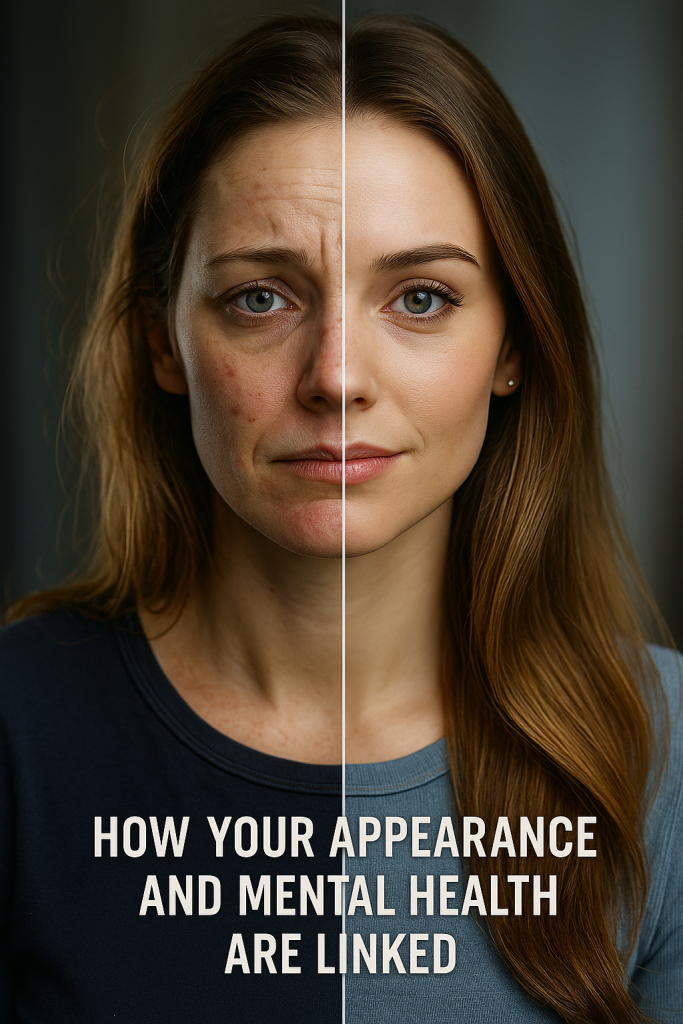Are you living with diabetes and worried about your eye health? Don’t fret, we’ve got you covered. In this article, we’ll give you a comprehensive overview of diabetic retinopathy, including what it is, its causes, symptoms, and treatment options. By recognizing the warning signs and taking control of your blood sugar levels, you can prevent vision loss and preserve your eyesight. So, keep reading to empower yourself with knowledge and protect your precious vision.
What Is Diabetic Retinopathy
Diabetic retinopathy is a progressive eye disease caused by damage to the blood vessels in the retina. It is a condition that affects people with diabetes and can lead to vision loss if left untreated. The main cause of diabetic retinopathy is high blood sugar levels due to diabetes. When blood sugar levels are too high, it can damage the blood vessels in the retina, leading to various changes in the eye.
Signs of diabetic retinopathy can vary depending on the stage of the disease. In the early stages, there may be no symptoms at all. As the condition progresses, symptoms may include blurry vision, floaters in the field of vision, and even blindness in severe cases.
Severe nonproliferative diabetic retinopathy is a stage of the disease where the blood vessels in the retina become blocked, preventing proper blood flow. This can cause significant vision problems and requires immediate medical attention.
A normal retina has healthy blood vessels that supply oxygen and nutrients to the retina. In diabetic retinopathy, the blood vessels can leak or become blocked, leading to vision problems. It is important to diagnose and treat diabetic retinopathy early to prevent further damage to the retina and preserve vision. Regular eye exams are crucial for detecting and managing this condition.
Causes of Diabetic Retinopathy
High blood sugar levels due to diabetes are the primary cause of diabetic retinopathy, leading to damage and changes in the blood vessels of the retina. Understanding the causes of diabetic retinopathy is crucial for managing the disease and preventing vision loss. Here are three key factors contributing to the development of diabetic retinopathy:
- Damage to blood vessels: High blood sugar levels can cause the blood vessels in the retina to weaken and become damaged. This damage disrupts the normal flow of blood, leading to leakage and swelling in the retina.
- Abnormal blood vessel growth: In some cases, the damaged blood vessels in the retina trigger the growth of new, abnormal blood vessels. These new vessels are fragile and prone to bleeding, which can result in further damage to the retina and potential vision loss.
- Inflammation and fluid accumulation: The changes in the blood vessels and the leakage of fluid can cause inflammation in the retina. This inflammation can lead to the accumulation of fluid in the macula, the central part of the retina responsible for sharp vision. This fluid accumulation, known as diabetic macular edema, can cause blurry vision and further impair visual function.
Symptoms of Diabetic Retinopathy
If you have diabetic retinopathy, you may experience gradually worsening vision, sudden vision loss, shapes floating in your field of vision, blurry or patchy vision, and eye pain or redness. These symptoms can vary in severity and may indicate different stages of the disease. It is important to seek medical attention if you notice any changes in your vision, as early detection and treatment can help prevent further vision loss.
Gradually Worsening Vision
As the condition progresses, you may notice a gradual worsening of your vision. This is a common symptom of diabetic retinopathy, especially as the disease advances. Here are three examples of how your vision may be affected as diabetic retinopathy worsens:
- Blurred Vision: Mild diabetic retinopathy can cause your vision to become slightly blurry. You may have difficulty reading small print or seeing objects in sharp focus.
- Fluctuating Vision: With moderate nonproliferative diabetic retinopathy, your vision may change from clear to blurry throughout the day. This can make it challenging to perform tasks that require visual precision.
- Vision Loss: In severe cases of diabetic retinopathy, you may experience significant vision loss. This can manifest as blank or dark areas in your field of vision, poor night vision, or faded colors.
Sudden Vision Loss
You may experience a sudden loss of vision if you have diabetic retinopathy. Diabetic retinopathy is a condition characterized by damage to the blood vessels in the retina, the tissue at the back of the eye responsible for converting light into electrical signals for vision. There are two stages of diabetic retinopathy: non-proliferative diabetic retinopathy (NPDR) and proliferative diabetic retinopathy (PDR). NPDR is the early stage, where blood vessels leak fluid, leading to swelling and accumulation of lipids. PDR is the advanced stage, where abnormal blood vessels grow, causing bleeding and scar tissue formation. Sudden vision loss can occur in PDR when these abnormal blood vessels bleed or cause retinal detachment. It is important to seek immediate medical attention if you experience sudden vision loss, as prompt treatment can help prevent further vision loss and improve outcomes.
Shapes Floating in Your Field of Vision
When experiencing diabetic retinopathy, you may notice shapes floating in your field of vision, a symptom that can indicate the progression of the condition. These floating shapes, known as floaters, are caused by the presence of blood or other fluids in the vitreous, the gel-like substance that fills the back of the eye. They may appear as dark spots, specks, or cobweb-like strands that move around when you try to focus on them. The floaters can be more noticeable when looking at a bright background, such as a clear sky or a white wall. It’s important to seek medical attention if you experience an increase in the number or size of floaters, as it could be a sign of a more severe form of diabetic retinopathy.
Vlurred or Patchy Vision
If you’re experiencing diabetic retinopathy, you may notice that your vision becomes blurred or patchy. This is one of the common symptoms of the condition. Diabetic retinopathy is a disease that affects the retina in people with diabetes. It is caused by high blood sugar levels, which damage the blood vessels in the retina. As a result, the retina is unable to function properly, leading to blurred or patchy vision. This can make it difficult to see objects clearly and can affect both near and distance vision. If you notice any changes in your vision, it is important to seek immediate medical attention. Early treatment and management of diabetic retinopathy can help prevent further vision loss and complications.
Eye Pain or Redness
As you continue to experience diabetic retinopathy, the blurred or patchy vision may be accompanied by eye pain or redness due to inflammation and damage to the blood vessels in the retina. This can be a sign of the advanced stage of diabetic retinopathy, known as proliferative diabetic retinopathy (PDR). Here are three important things to know about eye pain or redness as symptoms of diabetic retinopathy:
- Inflammation: The inflammation in the blood vessels of the retina can cause pain and redness in the eyes. This is a result of the blood vessels becoming damaged and leaking fluid into the surrounding tissues.
- Increased pressure: The abnormal blood vessel growth in PDR can lead to increased pressure in the eyes, causing pain and discomfort. This pressure can also contribute to the redness in the eyes.
- Nerve damage: Diabetic retinopathy can also affect the nerves in the eyes, leading to pain and redness. The damaged blood vessels and inflammation can cause nerve damage, resulting in these symptoms.
If you experience eye pain or redness, it is crucial to seek immediate medical attention to prevent further complications and preserve your vision.
Difficulty Seeing in the Dark
Difficulty seeing in the dark is a common symptom of diabetic retinopathy. This condition affects the retina, the tissue at the back of the eye responsible for converting light into electrical signals that are sent to the brain for vision. When blood vessels in the retina are damaged due to high blood sugar levels, it can lead to blurry vision, poor night vision, and difficulty seeing in low light conditions. To help you understand the symptoms of diabetic retinopathy better, here is a table summarizing the common symptoms associated with this condition:
| Symptom | Description |
|---|---|
| Increasing number of floaters | Small specks or spots that float across your field of vision |
| Blurry vision | Difficulty seeing objects clearly |
| Changing vision | Vision that goes from blurry to clear and vice versa |
| Blank or dark areas | Areas in your field of vision that appear blank or dark |
| Poor night vision | Difficulty seeing in low light conditions |
| Faded or washed-out colors | Colors that appear less vibrant or washed out |
If you experience any of these symptoms, it is important to seek medical attention promptly to receive the appropriate treatment and prevent further vision loss.
Diagnosing Diabetic Retinopathy
To diagnose diabetic retinopathy, your eye doctor will use dilating eye drops to examine the retina. This allows for a better view of the blood vessels in the back of your eye. Here are three key steps involved in diagnosing diabetic retinopathy:
- Dilated eye exam: Your eye doctor will use special eye drops to widen your pupils. This allows them to see the retina and check for any signs of damage, such as leaking blood vessels or abnormal growth of blood vessels.
- Optical coherence tomography (OCT): This imaging technique provides detailed cross-sectional images of the retina. It can help detect any swelling or fluid buildup in the macula, which is the central part of the retina responsible for sharp, clear vision.
- Fluorescein angiography or OCT angiography: These tests help visualize any abnormalities in the blood vessels of the retina. Fluorescein angiography involves injecting a dye into your arm, which travels to the blood vessels in your eye. The dye highlights any areas of leakage or blockage. OCT angiography is a dye-free technique that uses light waves to create detailed images of the blood vessels.
Treatment Options for Diabetic Retinopathy
To effectively treat diabetic retinopathy, your eye doctor will explore various treatment options. The choice of treatment depends on the stage of the disease and the severity of the symptoms. Here are some common treatment options for diabetic retinopathy:
| Treatment Options | Description |
|---|---|
| Controlling blood sugar and blood pressure | This is the first step in managing diabetic retinopathy. By keeping your blood sugar and blood pressure levels under control, you can prevent further damage to the blood vessels in your eyes. |
| Anti-VEGF medication | Anti-VEGF medications, such as Avastin, Eylea, and Lucentis, are injected into the eye to reduce macular swelling. These medications work by blocking the growth of abnormal blood vessels and reducing leakage. |
| Steroid injections | Steroid injections may be used to reduce swelling in the macula. These injections can help improve vision and reduce the risk of further damage to the retina. |
| Laser surgery | Laser surgery is often used to seal leaking blood vessels and shrink abnormal blood vessels. This helps to reduce the risk of bleeding and further damage to the retina. |
It is important to note that treatment for diabetic retinopathy cannot cure the disease, but it can help slow down its progression and prevent further vision loss. Your eye doctor will determine the most appropriate treatment option for you based on your individual condition and needs. Regular follow-up visits and ongoing management of your diabetes are essential for maintaining good eye health and preventing complications.
Preventing Vision Loss From Diabetic Retinopathy
To prevent vision loss from diabetic retinopathy, it is important for you to actively manage your diabetes and regularly visit an ophthalmologist for dilated eye exams. Here are three key steps you can take to protect your vision:
- Control your blood sugar levels: Maintaining stable blood sugar levels is crucial in preventing damage to the blood vessels in your retina. Follow a healthy diet, exercise regularly, take your prescribed medications, and monitor your blood sugar levels as recommended by your healthcare provider.
- Manage other health conditions: High blood pressure and kidney problems can exacerbate the effects of diabetic retinopathy. Take steps to control your blood pressure through lifestyle modifications, such as reducing salt intake and exercising regularly. Additionally, managing kidney problems by following your healthcare provider’s recommendations can help protect your vision.
- Regularly visit an ophthalmologist: Schedule regular dilated eye exams with an ophthalmologist who specializes in diabetic eye care. These exams allow for a comprehensive evaluation of your retina, enabling early detection of any changes or complications. Early intervention and treatment can significantly reduce the risk of vision loss.
Diabetes-related Retinopathy
Diabetes-related retinopathy weakens the blood vessels in your retina. There are two types of diabetes-related retinopathy: nonproliferative diabetes-related retinopathy (NPDR) and proliferative diabetes-related retinopathy (PDR). NPDR is characterized by leaking blood vessels in the retina, leading to fluid, hemorrhage, or lipid accumulation. PDR involves the growth of abnormal blood vessels in response to poor blood flow, which can cause severe vision loss. If left untreated, diabetes-related retinopathy can lead to vision loss, low vision, or even blindness.
The retina is a vital part of the visual process. It is a tissue located in the back of your eye that converts light rays into electrical impulses, which are then sent to the brain for visual interpretation.
Managing diabetes and controlling blood sugar levels play a crucial role in preventing or delaying the progression of retinopathy. Anyone with diabetes, including those with gestational diabetes, type 1 diabetes, or type 2 diabetes, is at risk of developing diabetes-related retinopathy. Risk factors for retinopathy include pregnancy, hypertension, uncontrolled blood sugar, hyperlipidemia, and the duration of diabetes.
Regular eye exams are essential for early detection and management of diabetes-related retinopathy. By seeking timely treatment, you can prevent vision loss and improve your overall outcomes. Remember to prioritize your eye health and take necessary steps to manage your diabetes effectively.
The Role of the Retina in Vision
The retina plays a crucial role in your vision by converting light rays into electrical impulses that are then sent to your brain for interpretation. Here are three key points about the role of the retina in vision:
- Light Conversion: The retina contains specialized cells called photoreceptors, specifically rods and cones, that capture and convert light into electrical signals. Rods are responsible for detecting light and providing vision in low-light conditions, while cones are responsible for color vision and detailed visual acuity.
- Transmission: Once the light is converted into electrical signals, these signals travel through the optic nerve to the brain, specifically the visual cortex, where they are processed and interpreted. This allows you to perceive and make sense of the visual information around you.
- Central Vision: The macula, a small area at the center of the retina, is responsible for sharp, detailed central vision. It allows you to read, recognize faces, and see fine details. The macula contains a high density of cone cells, making it essential for tasks that require precise vision.
Understanding the role of the retina in vision highlights its significance in maintaining clear and accurate visual perception. Proper care and management of conditions like diabetic retinopathy are crucial to preserve the health and function of this vital part of the visual system.
Effects of Diabetic Retinopathy
If left untreated, diabetic retinopathy can have significant effects on your vision and potentially lead to vision loss or blindness. The condition affects the blood vessels in the retina, causing damage and impairing vision. Managing diabetes and controlling blood sugar levels can help prevent or delay the progression of retinopathy. However, without proper treatment, the effects of diabetic retinopathy can be devastating.
To illustrate the potential impact of diabetic retinopathy on your vision, consider the following table:
| Effects of Diabetic Retinopathy | Emotional Response |
|---|---|
| Blurred vision | Frustration |
| Distorted vision | Anxiety |
| Color blindness | Fear |
| Poor night vision | Helplessness |
As you can see, the effects of diabetic retinopathy can be emotionally distressing. Blurred and distorted vision can make it difficult to perform daily tasks, affecting your independence and quality of life. Color blindness and poor night vision can create a sense of fear and helplessness, limiting your ability to enjoy activities and navigate safely in low-light conditions.
It is crucial to prioritize regular eye exams and seek treatment if you experience any symptoms of diabetic retinopathy. Timely intervention can prevent further damage to your vision and improve outcomes. Remember, taking proactive steps to manage your diabetes and monitor your eye health is essential in preserving your vision and overall well-being.
Risk Factors and Prevention of Diabetic Retinopathy
To reduce your risk of developing diabetic retinopathy, it is important to manage your diabetes effectively. Here are three key factors to consider:
- Control your blood sugar levels: High blood sugar levels can damage the blood vessels in the retina, leading to diabetic retinopathy. By keeping your blood sugar levels within a target range, you can minimize the risk of developing this eye disease.
- Maintain a healthy lifestyle: Adopting a healthy lifestyle can help prevent or delay the onset of diabetic retinopathy. This includes eating a balanced diet, engaging in regular physical activity, and managing your weight. These lifestyle choices not only benefit your overall health but also contribute to better diabetes management.
- Regular eye exams: Regular comprehensive eye exams are essential for detecting diabetic retinopathy in its early stages. Diabetic retinopathy often has no symptoms in its early stages, so regular eye exams can help identify any signs of the disease before it progresses. Early detection and timely treatment can significantly reduce the risk of vision loss.




